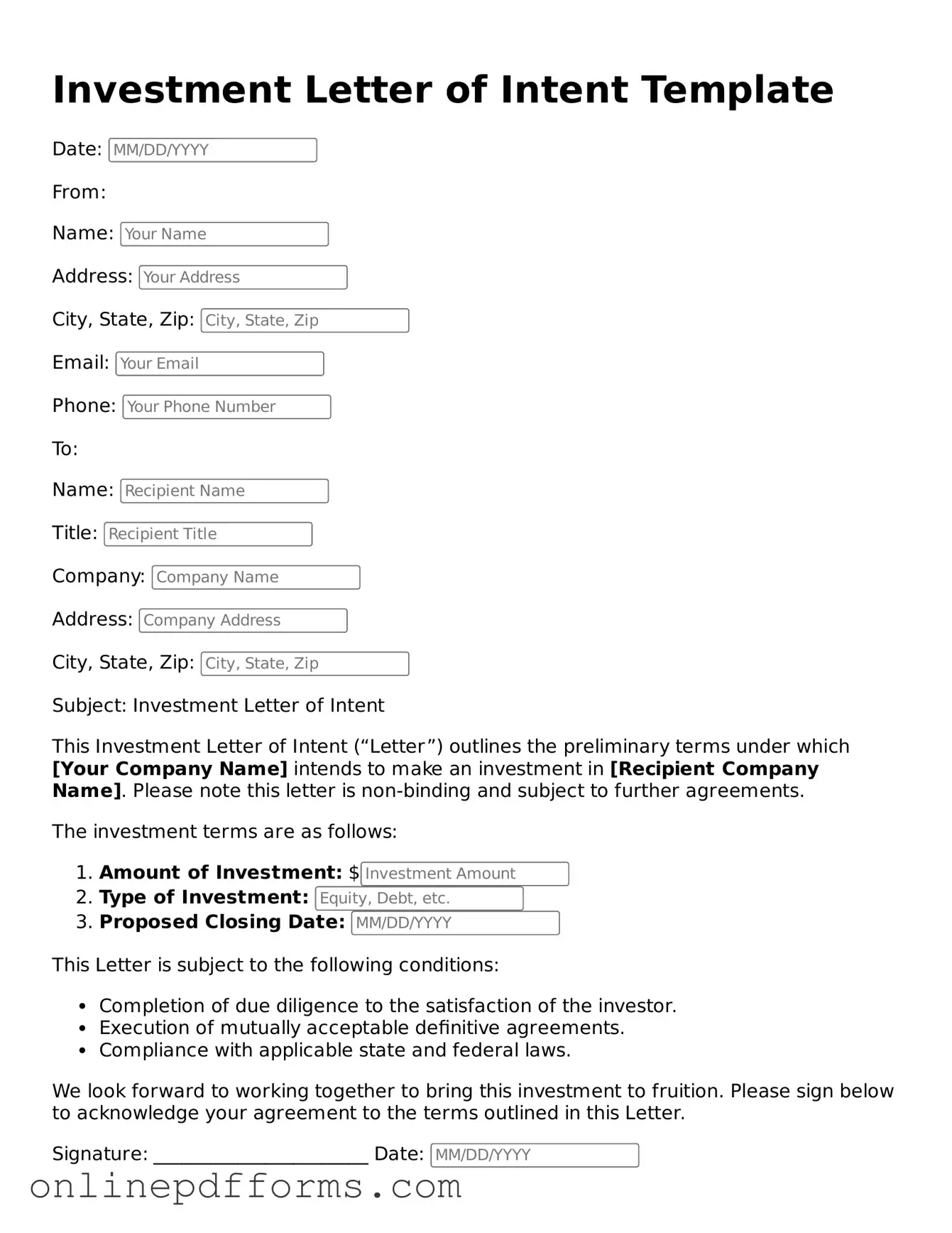Legal Investment Letter of Intent Form
An Investment Letter of Intent is a document that outlines the preliminary terms and conditions of an investment agreement between parties. It serves as a foundational step in the negotiation process, expressing the intent to move forward with a potential investment. Understanding this form is crucial for both investors and businesses alike.
To take the next step in your investment journey, please fill out the form by clicking the button below.
Open Investment Letter of Intent Editor Now
